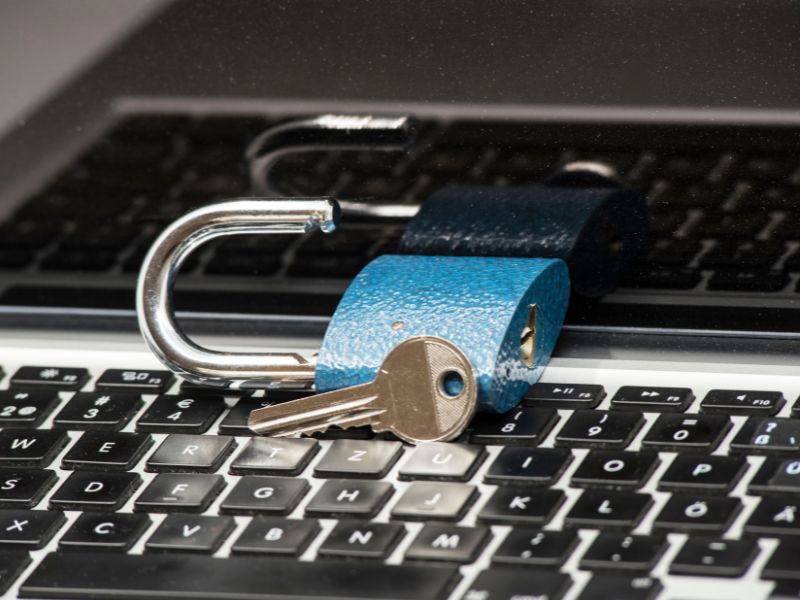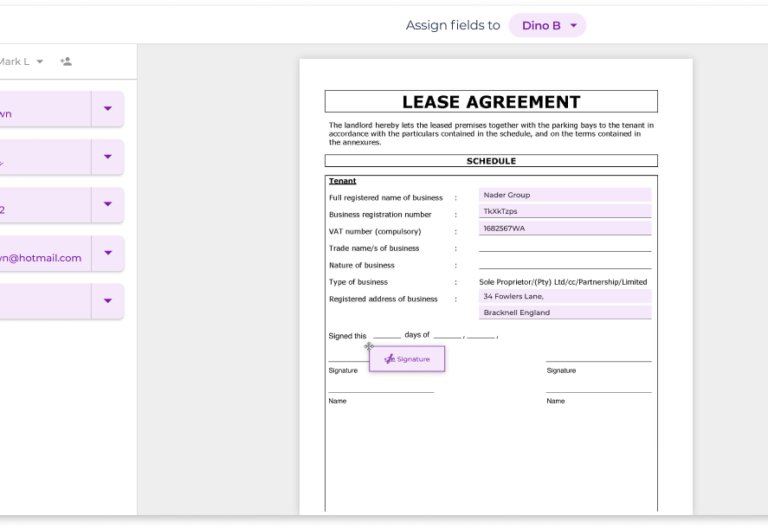As the need for digitization grows, so does the importance of finding reliable ways to send sensitive information. Whether it’s personal data, financial records, or confidential business documents, protecting this information from unauthorized access is critical.
This guide provides an overview of various methods and ways for sending sensitive information securely. By understanding these strategies and implementing them effectively, you can ensure the confidentiality and integrity of your data in our interconnected world. Gain insights on how to send sensitive information securely and take proactive measures to safeguard your information effectively.
Table of Contents

5 Methods for Sending Sensitive Information Securely
When sending sensitive information, several methods can help ensure its security. These methods include secure email options, encrypted messaging services, secure cloud storage applications, secure courier services, and even traditional faxing solutions.
1. Secure email options
Email is a widely used communication tool, but its inherent vulnerabilities make it susceptible to data breaches. However, secure email options are available to mitigate these risks. These options typically involve end-to-end encryption, which ensures that only the intended recipient can decrypt and access the message contents.
By choosing secure email services like ProtonMail, Tutanota, and Hushmail, you can safeguard sensitive information using encryption and other security measures like self-destructing messages and password-protected attachments.
2. Encrypted messaging services
For real-time communication and file sharing, encrypted messaging services provide a secure alternative to traditional SMS or instant messaging apps. These services utilize end-to-end encryption, preventing anyone, including service providers, from accessing the content of the messages.
Signal, Telegram, and WhatsApp are popular examples of encrypted messaging services that offer secure messaging, voice calls, and file transfers.
3. Secure cloud storage applications
Cloud storage applications can be an effective way to store and share sensitive information securely. However, not all cloud storage services prioritize security. When choosing a cloud storage provider, look for features like end-to-end encryption, strong access controls, and data residency options.
Services like Sync.com, pCloud, and Tresorit offer robust security measures, including zero-knowledge encryption, ensuring that only you and authorized recipients can access the stored data.
4. Secure courier services
When sending sensitive information via secure courier services, it is crucial to select a reputable provider known for prioritizing confidentiality. Take extra precautions by securely packaging the documents in tamper-evident envelopes or containers. Consider adding additional security measures such as seals or barcodes for tracking purposes. Request proof of delivery and opt for services that require recipient signatures. By entrusting your sensitive information to a secure courier, you can ensure its safe transportation and gain peace of mind.
5. Online faxing solutions
Faxing remains an excellent method for sending sensitive information. As a matter of fact, modern fax machines often incorporate encryption technologies for added security. With the transition to digital, the convenience and advanced features of online faxing services have gained popularity.
Online faxing enables users to send faxes directly from their computer or smartphone, with the option to encrypt the transmitted documents. Additionally, these services often provide integration capabilities, user access controls, and authentication measures, further bolstering the security of the transmitted data.

Best Practices for Sending Sensitive Information
Regardless of your chosen method, following best practices is essential for securely sending sensitive information. These practices include:
- Minimizing the use of sensitive information: Only collect and share necessary information.
- Use strong passwords and authentication measures: Ensure that your accounts are protected with unique and complex passwords and enable two-factor authentication whenever possible.
- Regularly update your software and devices: Keep your operating systems, applications, and security tools up-to-date to patch any known vulnerabilities.
- Be cautious with public Wi-Fi: Avoid sending sensitive information over public Wi-Fi networks, as they can be easily compromised. If you must use public Wi-Fi, consider using a virtual private network. A VPN will encrypt your data, keeping it safe from potential threats.
- Employ encryption: Whenever possible, use encryption to protect your sensitive information. This includes encrypting email attachments, using secure file transfer protocols (SFTP) for file transfers, and encrypting documents stored in the cloud.
- Be mindful of phishing attempts: Hackers commonly use phishing attacks to trick individuals into divulging sensitive information. Always verify the sender’s legitimacy and exercise caution when clicking on links or downloading attachments, especially if they request sensitive information.
- Restrict access with user permissions: Only share sensitive information with authorized individuals. Implement access controls and permissions to ensure that only authorized personnel can view or modify the data.
- Secure physical documents: If you need to send physical documents containing sensitive information, consider using tamper-evident envelopes or registered mail to prevent unauthorized access.

Checking for encryption
It’s crucial to ensure that encryption has been put in place to protect your sensitive data while using messaging apps or file-sharing services. Look for indicators such as HTTPS in the URL, padlock icons, or security badges from reputable organizations. These indicate that data transmitted between your device and the server is encrypted.
Verifying recipient identity
Before sending sensitive information, verify the recipient’s identity to ensure accurate delivery. Use trusted contact information, such as verified email addresses or phone numbers, and consider confirming the recipient’s identity through a secondary communication channel.
Regularly updating security measures
The digital landscape is constantly evolving, and new security vulnerabilities and threats emerge regularly. Stay proactive by periodically updating your security measures, including antivirus software, firewalls, and other security tools. Keep an eye out for security updates and patches provided by software vendors and apply them promptly.
Legal and Ethical Considerations
When handling sensitive information, it’s essential to understand the legal and ethical obligations surrounding its protection. Familiarize yourself with the applicable data protection laws and regulations in your jurisdiction, such as the General Data Protection Regulation (GDPR) in the European Union, the California Consumer Privacy Act (CCPA) in the United States, and the Health Insurance Portability and Accountability Act (HIPAA).
Data protection laws and regulations
Data protection laws and regulations are designed to safeguard personal information and impose obligations on organizations that handle such data. Familiarize yourself with these regulations and ensure compliance to avoid legal consequences and reputational damage.
In addition to legal requirements, there are ethical responsibilities associated with handling sensitive information. Respect individuals’ privacy rights, obtain consent when necessary, and manage the data responsibly and securely. Regularly assess and review your data handling practices to ensure ethical compliance.
Ensuring compliance with data protection laws is crucial to safeguard personal information, maintaining customer trust, avoiding legal penalties, and upholding ethical responsibilities. By adhering to these regulations, businesses demonstrate their commitment to data privacy and security practices.
Employ Safeguards To Protect Sensitive Information
Securely sending sensitive information is of utmost importance in today’s digital world. Protect sensitive data from unauthorized access using secure email options, encrypted messaging services, secure cloud storage applications, secure courier services, and online faxing solutions.
Additionally, enhance the security of your sensitive information by following best practices, such as checking for encryption, verifying recipient identity, regularly updating security measures, and adhering to legal and ethical considerations.
Remember, safeguarding sensitive information is not only a legal obligation but also an ethical responsibility.







